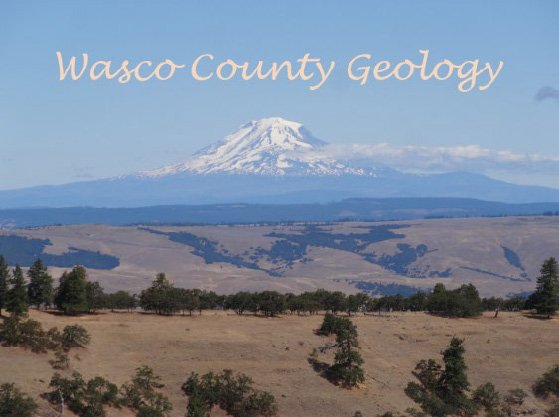Oregon Gems of the Rice Museum
/Rice Museum Curator Leslie Moclock demonstrates sunstone faceting at the conclusion of her November 10 lecture.
Synopsis of the GSOC Friday night lecture given on November 10, 2017, with speaker Leslie Moclock, Curator of the Rice Museum.
Rice Museum curator Leslie Moclock is in charge of the museum’s education curriculum. In the course of her educational presentations, she finds that kids always ask deceptively tricky questions like, “Why are minerals the color that they are?” Moclock enjoys this part of her work because answering these questions opens doors to doing research.
Examples of research topics she has pursued include two famous Oregon gemstones, opal (notably from Opal Butte in Morrow County) and sunstones (from Ponderosa and Plush area mines). So she brought an example of each to show the GSOC crowd and proceeded to explain the characteristics of each. The huge Oregon thunderegg shown in the photo contains opal and the interesting faceted and carved gem is sunstone.
Moclock shines a light through this dichroic faceted and carved Oregon sunstone gem.
Oregon’s state gem is the sunstone. Sunstones are large plagioclase feldspar crystals which have developed in porphyritic basalt. Another name for them is labradorite. In Oregon they are found in outcrops of Steens Basalt and possibly Picture Gorge Basalt, Miocene age flood basalts in southeastern Oregon. The stones develop in a 1100 Celsius degree environment and are extruded in the eruption. The areas known for gem quality stones are the Ponderosa mine in Harney County and several mines in Lake County near Plush.
Sunstones are found in a range of colors, mainly red, yellow, green, all due to copper included into the plagioclase matrix. The amount of copper present determines color from yellow to green to red. The copper is a colloidal element interspersed around the actual feldspar crystals. Some sunstones also exhibit aventurescence which is caused by copper platelets embedded in the crystals. This appears as bands of sparkly copperish dots in the stone, which reflect light when viewed at certain angles. This characteristic develops when the crystals are cooling post eruption. The interspersed copper begins to coalesce into these platelets. In the gem trade it is called “schilling.”
The color of a sunstone gem can be dichroic, a type of pleochroism. They can change color depending on the angle at which you view them. This effect is caused by intervalence charge transfer, where electrons are hit with light, and are transferred between one metal ion to another, then go back to their original sites emitting a characteristic wavelength of light. Dichroic sunstones can exhibit these color changes dramatically when they are faceted.
Moclock brought this huge thunderegg from Opal Butte for the GSOC crowd to ogle.
Opals in Oregon are found at Opal Butte in Morrow County and other Oregon sites. The thunder egg Moclock brought for the lecture came from Opal Butte. The thunderegg shell is volcanic rock with a high silica content, and the interior is filled with a variety of silica rich minerals.
All opal is composed of a hydrated amorphous form of silicon dioxide. It is formed at relatively low temperatures by deposition in fissures in rock. Lapidary names of various types of opals include common opal, white and milky in appearance and does not show a play of color; hyalite opal, transparent and jellylike; fire opal, red or orange in color; precious opal, which exhibits a play of colors due to light diffraction in its structure. Precious opals may have a background shade of a variety of colors.
Precious opal is a mineraloid, silica amorphously rolled together into a lattice of tightly packed spheres that function as a diffraction grating. The colors come from the bending of light through the lattice. The color depends on the size of the spheres in the lattice. The scientific designation for this type of opal is Opal-AG (amorphous gel). Hyalite and fire opal, Opal-AN (amorphous network), do not have spheres, their structure is not that organized. Common opal is either Opal-C (cristobalite) or Opal-CT (cristobalite-tridymite). Forming temperatures and time of precipitation are the variables which govern which types form, varying from 170 to 260 degrees Celsius. Moclock finds it interesting that “eyeballing” the gem can give you information about the microscopic structure.
Opals from Oregon, Nevada and Idaho form in flows of rhyolite lava. Opals can also form in sedimentary processes (Australian opals) related to oil deposits. Oregon opals are deposited in hydrothermal environments, a process which is less well known.
Since opals in Oregon often appear in thundereggs, the silica filled geode-like rocks of the Oregon desert, Moclock also reviewed the process speculated to be the formation of these interesting phenomena: “In a water-rich, high-silica lava flow water droplets flash to steam and crack open a vug. The flow finishes cooling and hardens. Later, the empty vugs fill with agate or other minerals.”
Article by Carol Hasenberg
Additional Reading
Inna Gem has some fabulous photos of stunning Oregon opals in its “Oregon Opals” and “For Sale” pages.
Ebay has a rather extensive and beautiful selection of “Oregon Opal” and “Oregon Sunstones.”
Good information on Oregon sunstones from the GIA Field Report, GEMS & GEMOLOGY, FALL 2013, VOL. 49, NO. 3.
USGS descriptions of opals and locations in the US.
Opal Info page from opalauctions.com has lots of information about Australian opals and other international opal types.
For more information and visiting hours for the Rice Museum visit their website.



























































